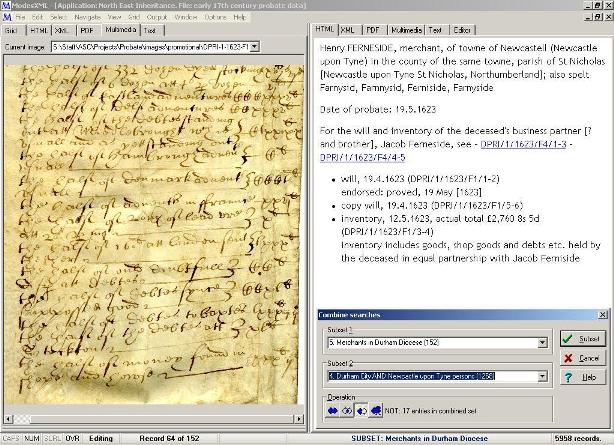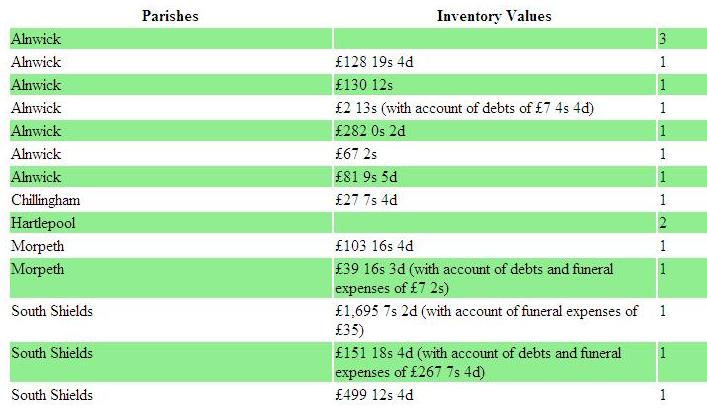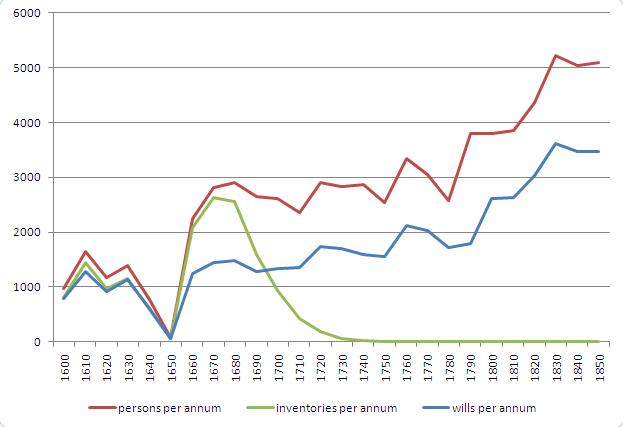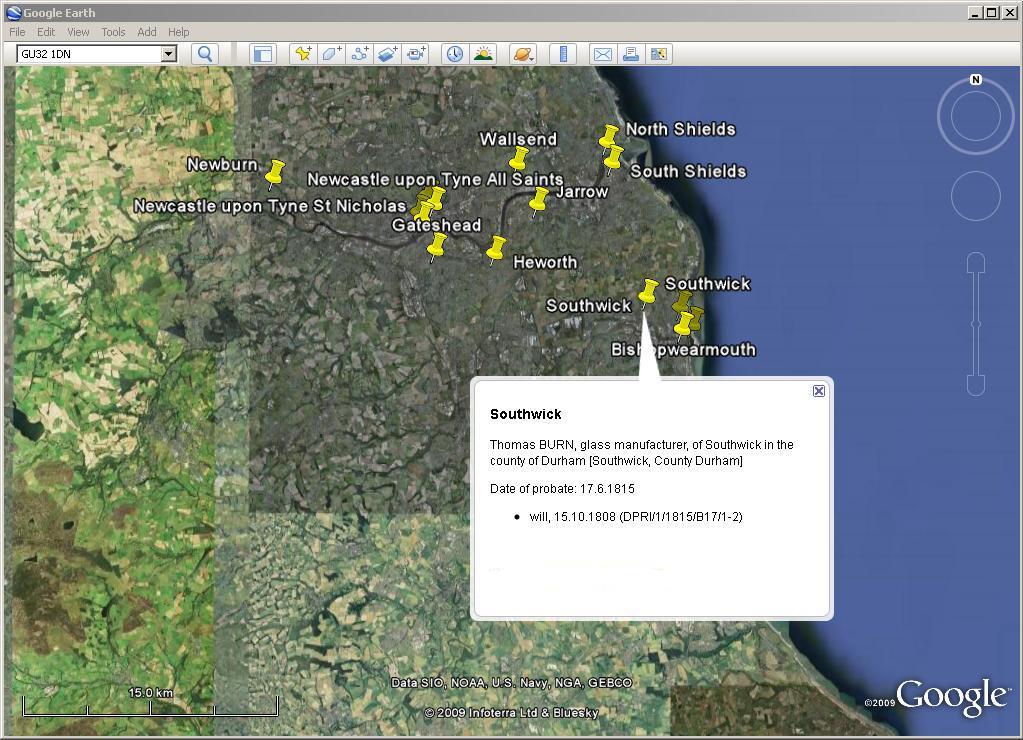Academic Use of Probate
The completion of the North East Inheritance catalogue of the Durham probate records unlocks the research potential of some 150,000 documentary records for 75,000 individuals who lived and owned property in the north-east between the early 16th century and the mid-19th century.

Selecting Probate Records
Formerly, in order to make effective use of probate records, whether of a town or of a particular socio-economic group, researchers would have had to spend long periods consulting a series of incomplete and antiquated indexes to build such thematic subsets and then still more time to extract the required information from each original record.
Now, however, the catalogue allows searches to be quickly made across a number of personal data fields (address, occupation, status) and also document details (date, type, monetary values). Many of these details were not formerly indexed until now, and the use of controlled forms of place names using modern spellings allows comprehensive datasets to be selected with more confidence. There is also the facility to combine multiple subsets of records in simple ways to further focus a dataset upon a particular group or theme. An image of each one of these records may then be viewed online, or downloaded to be viewed or printed later as required.
Statistical Analysis
These subsets can also be expressed in a number of template reports or downloaded as data files for more extended use by the researcher.


Data Exploitation
The catalogue data is held in XML, which maximises the opportunities to exploit the data in other contexts, for further analysis and incorporation within other projects or alongside other datasets available in XML.


The probate records of the region have long been considered a valuable primary source for historical research. The evidence they contain has frequently supported academic theses of regional and national scope, as well as more narrowly focused urban and industrial analyses. Nevertheless, these studies have only scratched the surface of the research potential of these records: it is anticipated that the North East Inheritance catalogue, by rendering all of these records accessible to researchers online and in a form that facilitates sophisticated analysis as well as individual document study, represents a great opportunity both for researchers who are already familiar with the probate collection and for those new to the field. The Special Collections staff will of course be happy to support this work in any way we can, and researchers whose needs are not answered by the online facilities may contact us through the website.


